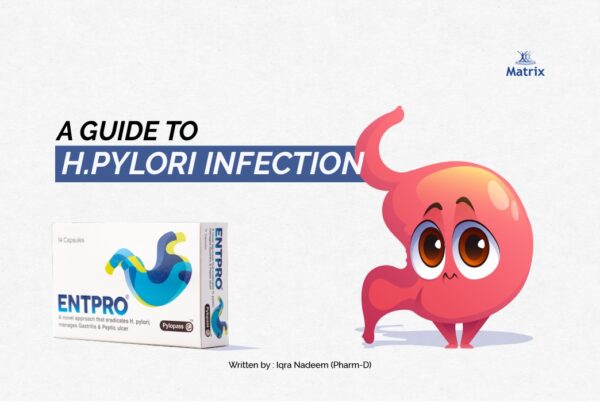
According to World Health Organization (WHO); Pain is an uncomfortable experience or sensation that can be caused by any potential damage to the tissues, injury or any illness. The symptoms of pain can last from hours to months to years.
In this blog, we will discuss the pain caused by any injury due to a physical activity or sports. Some common physical activities include working, playing, outdoor activity, fitness training or any sports. Physical activity is necessary to maintain optimal health at any age. A daily physical activity or a sport will prevent your body from aging, and illness & increase your quality of life.
Sports Injury:
Whether you play any sort of sports for competition or fitness or you are an enthusiast of physical activity, you don’t want to rest and waste your time because of an injury. The injuries related to sports often result in moderate to severe pain associated with soft tissue damage; strains, sprains and bruises etc. The inflammation occurs locally in result of these injuries causing swelling, pain and sometimes temporary illness.
An acute injury occurs suddenly, such as a sprain, strain or acute muscle pain. It can be caused by falling, by twisting a joint or tissue damage while injuries which develop gradually from over activity of muscles, joints or a long-term sport are referred as chronic injuries.
Types of Sports injuries;
| 1 | Bones – Breakage, fractures and dislocations |
| 2 | Joints – Elbow or Knee injuries in which cartilage can also be affected causing joint pain |
| 3 | Muscles – Cramps, muscle spasm, Tears, Aching and strain |
| 4 | Ligaments and tendons – Sprains |
| 5 | Skin – Bruises and cuts |
| 6 | Neck – Strain, neck muscle spams |
| 7 | Shoulder – Dislocation, tissue damage and tears |
| 8 | Leg & Foot – Leg pain, foot fractures, leg cramps, spams or cuts |

What are the symptoms of a sports injury?
- Inflammation, swelling & soreness
- Bruising, inflammation and pain
- Bone or joint deformity (misshaped)
- Decreased motivation for moving or physical activity
- Inability to handle weight
- Fever or warm temperature
- Weakness or stiffness
- Lower back pain

Take the edge off!
Sometimes it is quite not possible to prevent each and every injury, but a little effort and precaution could make a big difference.
If you want to make sure that you stay safe during any physical activity or sports and prevent the risk of injury then you have to take some actions;
- Choosing less dangerous activities or sports
- Don’t make any activity or sport your daily routine
- Stay hydrated; drink plenty of water & fresh juices
- Learn proper techniques
- Start any activity or sports slowly and gradually
- Wear proper clothing, gear & shoes for safety
- Regular checkups from your doctor or physician especially orthopedic doctor
First aid:
An immediate first aid or a technique can be done to prevent more damage; RICE.
- Rest – Don’t move or use the affected area for few days especially 48-72 hours.
- Ice – Apply cold packs or ice for 15 to 20 minutes daily every 4 hours
- Compression – To reduce the soreness and swelling, wrap the affected area with a bandage
- Elevation – To reduce pain, swelling & provide support use a pillow or anything to raise the affected area above your heart
- With this simple technique, you can get relief from minor sports injuries within a few weeks.
Management and Treatment of Sports injuries:
Evidence suggests that Oral NSAIDs, Analgesics, Opioids can reduce pain and inflammation & also reduce the symptoms of the injury. Oral NSAIDs, including aspirin & paracetamol (acetaminophen) are currently the most recommended drug treatments for the symptoms associated with sporting injuries. They can provide recovery from sprains, strains, lower back pain and musculoskeletal injuries. Oral NSAIDs get to the affected area site only after the drug enters into systemic circulation but they cause some serious side effects. Whereas, topical NSAIDs can provide direct relief to the injured area as they get absorbed in the skin in form of gels or transdermal (skin) patch or plaster without causing any unpleasant effects.
Kefentech® Plaster is a transdermal patch containing an effective anti-inflammatory drug called Ketoprofen. It reduces the inflammation caused by injury & also acts as a pain killer. The plaster when applied onto the affected area get absorbed into the skin, subcutaneous fat tissues & muscles to provide relief from acute pain or soft tissue injury anywhere on the body.
The convenience of Kefentech plaster & pain relieving abilities of Kefentech Plaster has made this plaster a novel solution to use in adults and seniors for any kind of pain & injuries. Kefentech plaster is also prescribed by orthopedics for knee osteoarthritis, rheumatoid arthritis and lower back injury.
Features of Kefentech® Plaster:
- A convenient transdermal patch
- Pain relief occurs within 30 minutes & persists up to 6 hours
- Topical delivery
- No chances of skin irritation due to skin adhesiveness
- Non-invasive, safe & effective
- Clinically proven
- Approved by Drug Regulatory Authority of Pakistan (DRAP)

References:
https://jamanetwork.com/journals/jama/fullarticle/194526
https://www.ncbi.nlm.nih.gov/pmc/articles/PMC6025096/
https://www.cdc.gov/mmwr/volumes/71/rr/rr7103a1.htm
https://www.betterhealth.vic.gov.au/health/HealthyLiving/sports-injuries#bhc-content
https://my.clevelandclinic.org/health/diseases/22093-sports-injuries






